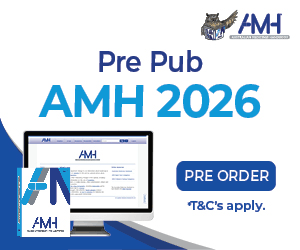Female nurses aren’t getting the same opportunities to advance into leadership roles as men, a Monash University study has found.
Comprehensively reviewing decades of data, researchers identified the collective sociocultural, professional, organisational, and individual barriers that hold female nurses back from being considered, applying for, or accepting leadership positions.
Published in The Lancet’s EClinicalMedicine, the international review, part of a large-scale National Health and Medical Research Council funded initiative to Advance Women in Healthcare Leadership (AWHL), reveals healthcare systems and organisations limit women nurses in skill acquisition, motivation and opportunities in healthcare leadership, due to inequitable policies, practices and bias.
According to researchers, gender stereotypes, cultural beliefs and real-world scenarios in healthcare show health systems are generally led by men and delivered by women, who are perceived primarily as carers, and not as leaders. Nursing is considered women’s work or a woman’s career and is perceived as feminine. While nearly 70% of the global healthcare workforce is made up of women, including 89% who are nurses, just 25% of senior healthcare roles are filled by women.
The research also highlighted how gendered roles such as disproportionate childcare responsibilities and juggling family with part-time work, limits leadership opportunities. To break down these barriers, researchers argue for systems and organisational change, including industry-wide measures such as cultural change, policies and practices that support women to work to their preferred capacity and incorporate part-time leadership roles.
“The barriers identified show women nurses don’t have the same opportunities for leadership as men, following a common theme throughout healthcare, a sector delivered by women and led by men,” said Professor Helena Teede, Monash University Professor of Women’s Health and Monash Centre for Health Research Implementation Director.
First author Mihiri Pincha Baduge is a PhD candidate with Monash University’s AWHL international initiative, and a critical care registered nurse. She was born and studied nursing in Sri Lanka, and shared her experiences as a woman, a nurse, a mother, a migrant and a person of colour.
“I’ve noticed that healthcare leadership roles often overlook people like me,” Ms Pincha Baduge said.
“When I returned to work after parental leave, I decided to shift from full-time to part-time nursing. Now my eligibility to apply for leadership roles is restricted because these leadership positions lack work-life flexibility and part-time options.”
Ms Pincha Baduge’s work also explores barriers to leadership for nurses when gender intersects with other social identities such as culture and ethnicity. She says she faces many challenges as a nurse in Australia, which is reflected in her global research.
“We’ve found that societal issues and organisational hurdles challenge women’s individual credibility, capacity, and capability in nursing,” she said.
“These barriers make it tough for women to feel confident pursuing leadership roles.
“It’s like a double whammy – women nurses don’t feel confident enough, and this is reinforced as qualified women get passed over for leadership roles. The workplace itself can be a battlefield, with unconscious bias and discrimination making it way harder for women, especially in nursing, which is seen primarily as a feminine caring role, to climb the leadership ladder.”









6 Responses
Thank you for doin this vital research in nursing! I’ve been a RN for 35 years and what you have now proven through data verify what I have experienced all my career. Please forward this research to every nursing body and politicians….this is important that Australians should know what nurses go through and the total inequity in Nusing as a female.
All so true! For a female dominated profession it is amazing how many men end up in leadership roles.
Support this research and it confirms my world view as a senior clinician in MH in Australia (NSW) for 30+ years. I have reached ministry and executive level a number of times and have had a wide variety of negative experiences from male bosses and colleagues.
I have been offered more junior roles if I move to another area. I have a conscious experience of being pushed “backwards”. Also that I must be a ‘threat’ as I am tall and yes a migrant from Canada. Must be doubly hard for women of colour. Anything ‘different’ seems to be unpalatable.
My manner is always professional respectful and collegial. I am now dubious about being asked to do a powerpoint presentation for a prospective role as I feel my ideas are being harvested without me getting the role. Its happened twice. I am now more careful about detailing strategies which is very sad.
This applies to clinical leadership roles as well as management. Nurses who wish to become nurse practitioners must have worked the equivalent of three years’ (5,000 hours) full-time experience at an advanced practice level, within the past six years, from the date when the application seeking endorsement as an NP is received by the NMBA. Nurses who have many years of experience but then have time off to have children or work reduced hours to manage caring roles can find themselves unable to meet the hours requirement as non of their previous experience is counted. Despite nursing being a mainly female workforce child bearing and rearing is not something that has been factored into leadership. In 2017 the number of male NPs was approximately 20% yet men made up only 11% of the nursing workforce in 2016.
https://hwd.health.gov.au/resources/publications/factsheet-nrpr-2017.pdf#:~:text=In%202017%2C%2080.9%25%20of%20the%20Nurse%20Practitioner%20workforce,and%20they%20now%20comprise%2019.1%25%20of%20the%20workforce.
Interesting figures there. Yes the men seem to go to the top jobs yet so few are in the total workforce
Unfortunately bias toward women in leadership still exists 2024. Women are a great source of knowledge, understanding and are highly intelligent.
Hey men get over yourselves and let women in. You don’t need to feel threatened. And yes there are ways too make work, homelife, motherhood, etc balance with work if we are really serious about seeing women in leadership. It is men that are putting obstacles in the way. As a male who worked with mainly men in construction for many years it was refreshing to work with so many wonderful woman when I went into nursing.. obstacles to leadership can be removed, it’s just are we willing to put our bias aside to see it happen, then put in place what’s needed to make it happen. Ask the women in nursing what they need to achieve then remove the barriers and stop with the excuses MAKE IT HAPPEN.